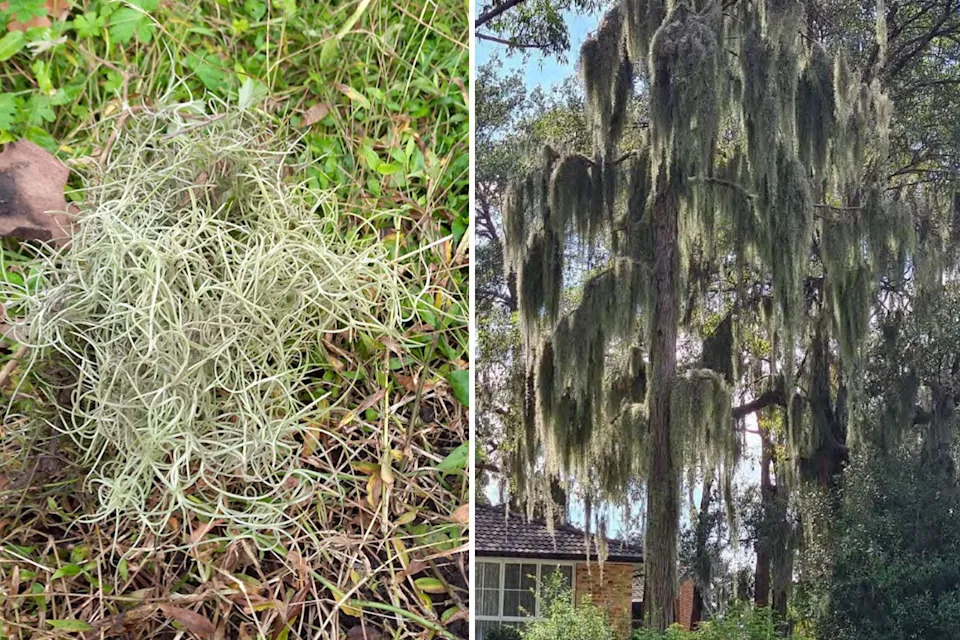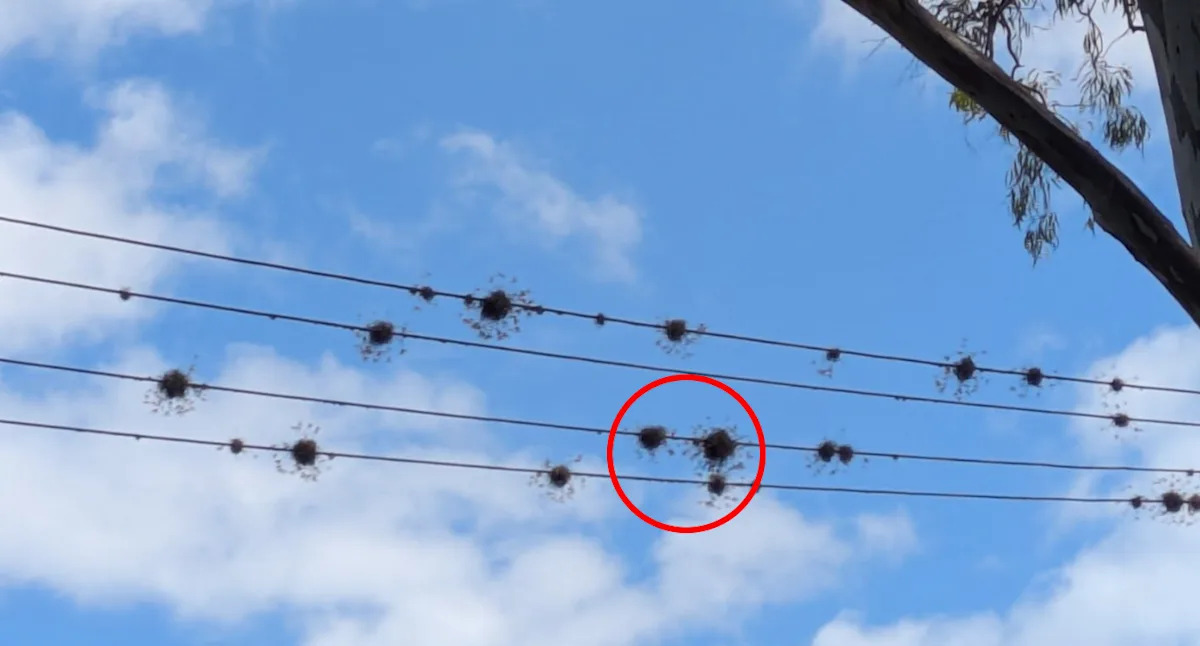After spending over a decade helping Australians transform their gardens and backyards, Kate Wall thought she had seen it all. So she was surprised when she came across several unusual clumps growing on a cluster of suburban power lines earlier this month.
The ecologist and garden trainer was driving to a new client's house in Brisbane when she looked up and spotted a row of fluffy balls – the largest measuring about 15cm in diameter – tightly wrapped on wires hanging near a rubber tree. Kate was puzzled by the amazing sight and stopped to take a closer look.
“There were quite a few power lines on the small piece of power lines next to the tree, but there were no them anywhere else,” she told Yahoo News Australia, noting she didn't see the plant growing on the neighboring gum “at all.”
Kate said she “immediately” identified the growths as ball moss – a type of air plant often touted as the perfect indoor addition.
While the plants can thrive outdoors in Queensland's humid climate, Kate said she had never witnessed a scene like this. In its native Central America, the species “usually colonizes power lines,” she explained.

Ball moss is a “remarkably robust and fascinating” type of air plant. Source: Kate Wall/Facebook
How did the ball moss get there?
ball moss (Tillandsia recurvata) “is remarkably robust and fascinating,” said the gardener. “Plain and simple, it's an air plant, so it attaches itself to trees. It doesn't have a root system in the ground to absorb water, so it needs to be able to pull moisture from the air.”
As to how the plant began sprouting on the power lines, Kate told Yahoo she believes its “very fluffy” airborne seeds must have ended up there.
“I suspect the reason it's next to the tree and nowhere else is because everywhere else the wind can go faster past the power lines, but the tree slows the wind down and they have an easier time getting caught in the power lines there.”
Gardener's plea for invasive weeds to the Aussies
After posting pictures of the growths online, the gardener said she was stunned to receive “very emotional comments” from people claiming the plant was an invasive pest.
While the species is not listed as a weed in Australia, its close relative, Spanish moss, is increasingly recognized as an environmental weed in Queensland and New South Wales, although it is not currently declared as such in any law.
Spanish moss has wreaked havoc in parts of Sydney in recent months, with several councilors urging residents to keep an eye out for the “beautiful” escaped garden plant, which is known to suffocate larger trees.

Spanish moss, a hanging plant that thrives in warm, moist environments, caused major problems in Sydney following heavy rains this year. Source: Kierans Creek Landcare Group/Willoughby City Council
While some harmful interventions raise alarms for good reason, Kate told Yahoo she implores people not to jump to conclusions.
“We can tend to either have a very negative attitude and say this is a bad thing, you have to deal with it, or we can approach it with fascination. And I would love for people to take that second route.”
“Look at the situation, learn something from the situation, and before we decide something is bad, learn a little bit more about it.
“Just one small spot doesn't make it an invasive species. Sure, it shows it has potential and that's something to keep an eye on, but we don't have to react badly at first.”
Do you have a story tip? E-mail: newsroomau@yahoonews.com.
You can also continue to follow us Facebook, Instagram, TikTok, Twitter And YouTube.

